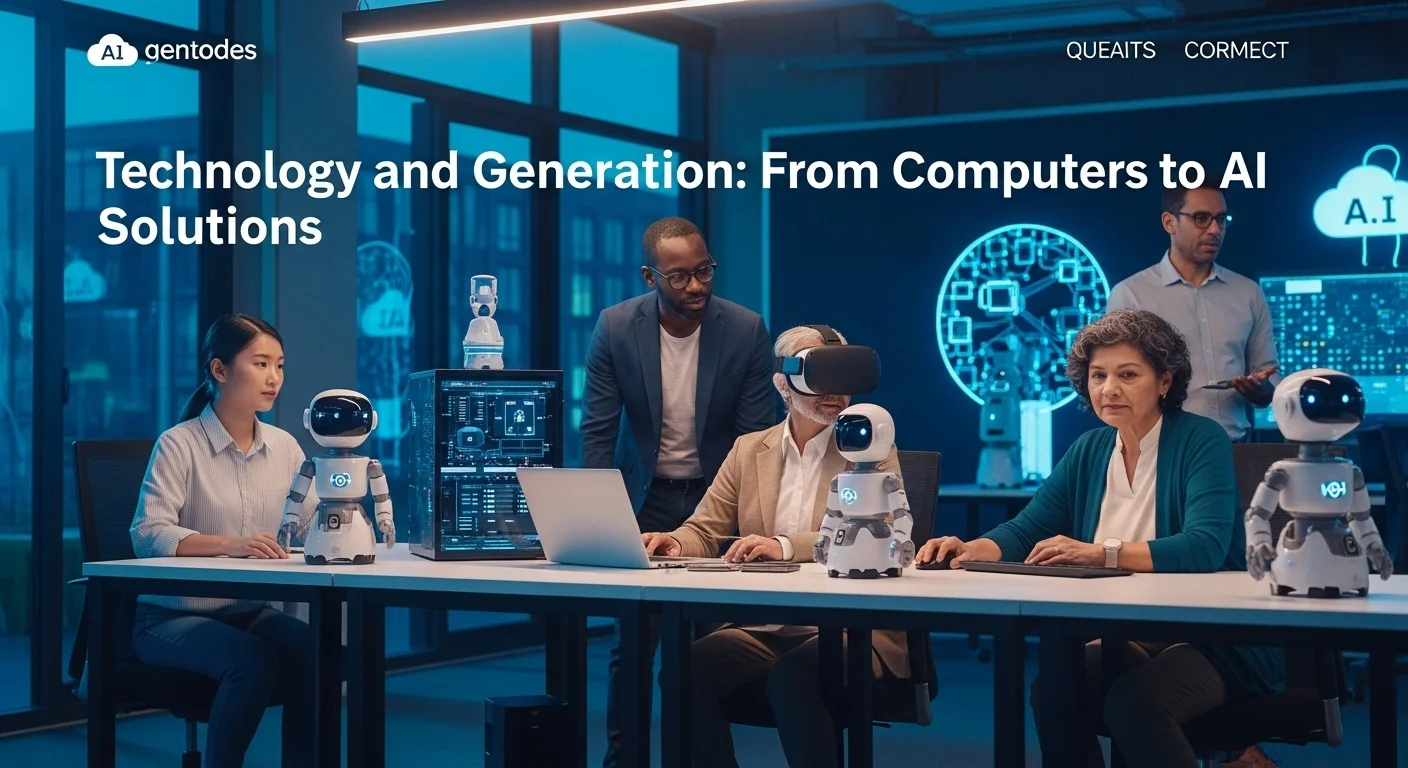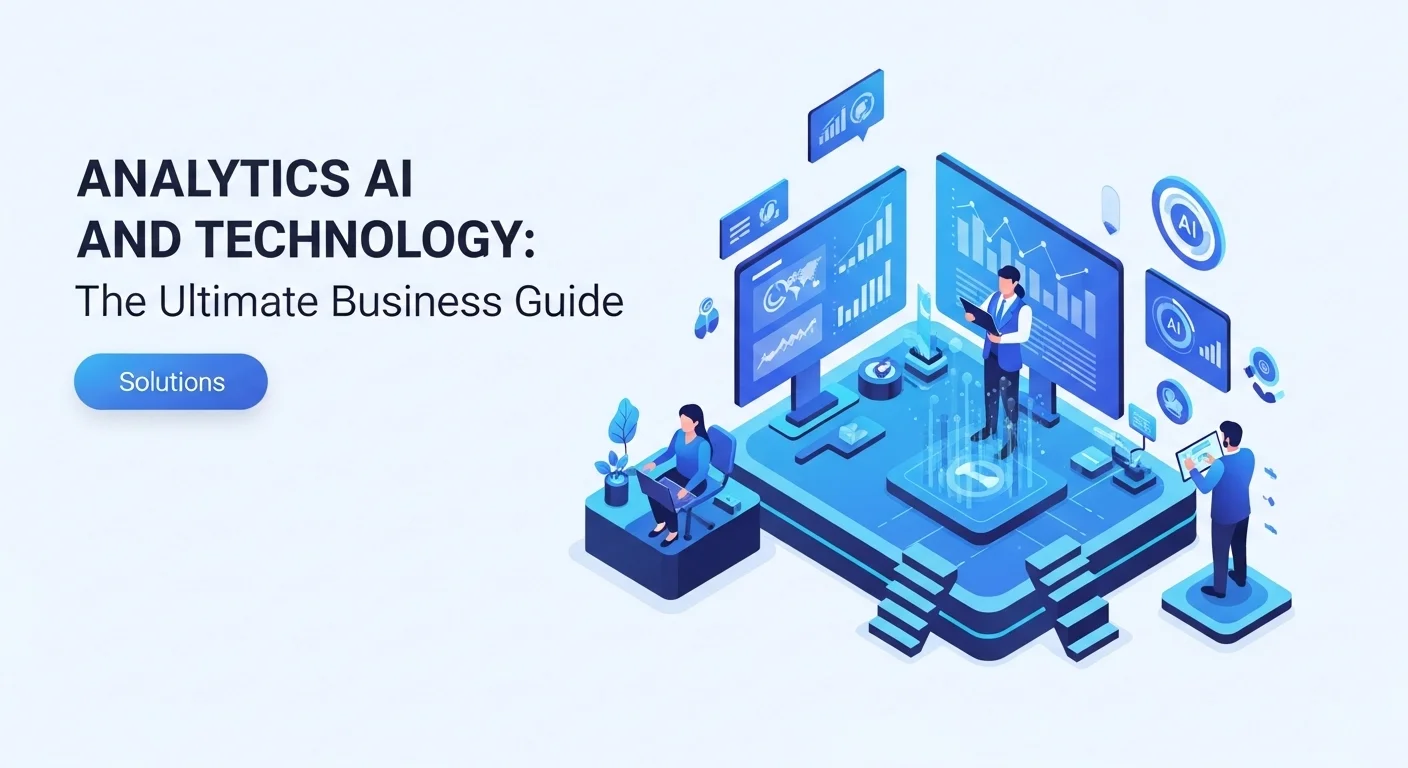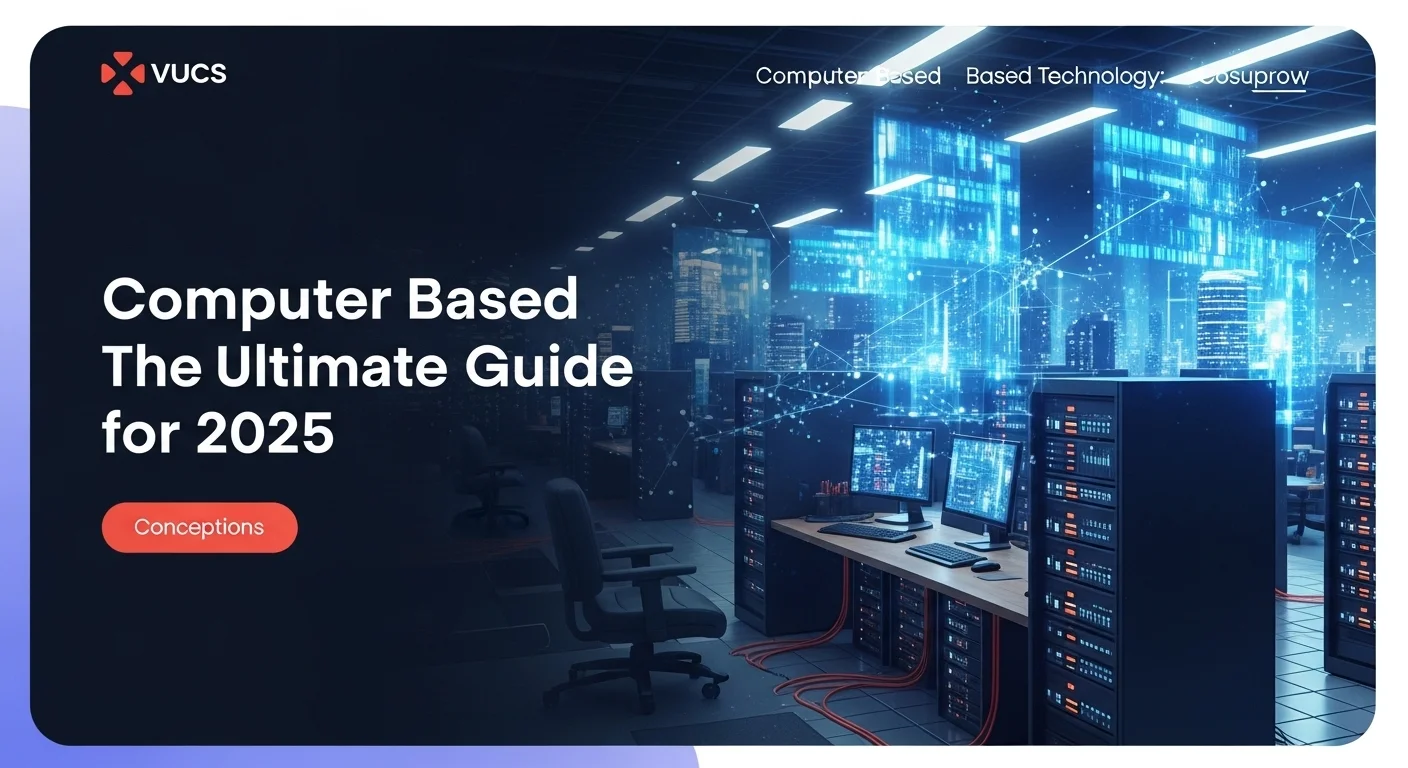From Punch Cards to AI That Thinks: A Personal Guide to Tech Generations

Executive Summary
In my years as a tech analyst, I've seen 'generation' mean more than just a new gadget. It’s a seismic shift that changes everything. This article is my personal take on this journey. We'll walk through the pivotal moments, from the 'fourth generation' of computers that brought processing power to our desks, to the 'fifth generation' that is now infusing our world with Artificial Intelligence. We'll explore how these advancements aren't just for tech giants. We'll see how even a simple 'small shop name generator' is a product of this incredible evolution and how today's generative AI is creating unprecedented opportunities. This is a guide for anyone who wants to understand not just what the technology is, but what it means for our businesses, our creativity, and our future.
Table of Contents
Table of Contents
- What Does 'Generation' Really Mean in Tech?
- The Game Changer: When Computers Came Home (The 4th Generation)
- The Leap to Intelligence: The Dream of the 5th Generation
- From Calculating to Creating: The Tech Under the Hood
- Putting AI to Work: Modern Business Strategies
- Your Playbook for Adopting New Tech
- Essential Tools and a Glimpse of the Future
What Does 'Generation' Really Mean in Tech?
When we talk about a 'generation' in technology, we're not just talking about a minor upgrade. We're talking about a fundamental leap forward that redefines the rules of the game. I’ve seen it happen time and time again. One moment, a technology is the exclusive domain of giant corporations and research labs; the next, a new generation makes it accessible to everyone. Understanding these shifts is vital because each one unlocks new possibilities and makes old ways of working obsolete. The clearest story of this incredible process is the evolution of the computer. It’s a journey from massive, power-hungry machines to the intelligent devices in our pockets.
The early days were wild. First-generation computers (1940-1956) used vacuum tubes and filled entire rooms. They were clunky and unreliable. The second generation (1956-1963) brought us transistors, making computers smaller and faster. Then came the third (1964-1971) with integrated circuits, which packed more power into even smaller chips. These were all crucial steps, but they were just the warm-up act for the revolution that was to come: the fourth generation.
The Game Changer: When Computers Came Home (The 4th Generation)
The fourth generation of computer, which kicked off around 1971, changed the world forever because of one magical invention: the microprocessor. This was the moment when all the essential parts of a computer’s brain (the CPU) were squeezed onto a single, tiny silicon chip. We called it Very Large Scale Integration (VLSI), but its impact was even bigger than its name. Suddenly, computers didn't need a dedicated, air-conditioned room. They could fit on a desk.
This was the birth of the personal computer (PC), and it was a revelation. For the first time, computing power was democratized. These machines were smaller, far more reliable, and affordable. We got things we take for granted today, like RAM for active memory and ROM for startup instructions. Most importantly, we got user-friendly interfaces, like the Graphical User Interface (GUI), which let us click on icons instead of typing cryptic commands. This era gave us languages like C++ and Python, making software development more accessible. Businesses could finally manage their own finances, write their own documents, and organize their inventory. The fourth generation didn't just build a new machine; it built the foundation of our modern digital world.
The Leap to Intelligence: The Dream of the 5th Generation
As personal computers became commonplace, a new, ambitious dream began to form: What if computers could think? This question is the heart of the fifth generation of computer, an ongoing evolution that started in the 1980s. This generation isn't about a single piece of hardware; it's about a complete change in purpose. The goal is to build machines with artificial intelligence (AI) that can reason, learn, and interact with us naturally.
The focus shifted from raw calculation speed to creating systems that could handle ambiguity and complex problems. The building blocks were new concepts like parallel processing (letting a computer multitask on a massive scale) and Ultra Large-Scale Integration (ULSI) to pack in even more power. But the soul of the fifth generation is its focus on AI disciplines like natural language processing (NLP), which lets us talk to our devices, and machine learning, which allows computers to learn from data without being explicitly programmed. The early projects didn't achieve all their lofty goals, but they lit the fuse for the AI explosion we're living through right now. This is the shift from seeing computers as tools to seeing them as partners.

From Calculating to Creating: The Tech Under the Hood
To truly appreciate how we got here, it helps to look at the nuts and bolts. The fourth generation was a masterclass in refining the microprocessor. Engineers worked tirelessly to cram more transistors onto chips, following Moore's Law and delivering exponential growth in power. This engineering muscle allowed for sophisticated operating systems like Windows and macOS, which managed all that power and gave us a platform for software. Networking took off, connecting these individual PCs into local networks and, eventually, the worldwide web.
The fifth generation, on the other hand, is built on a different set of tools designed for intelligence:
- Parallel Processing: Instead of tackling problems one step at a time, this method uses multiple processors to work on different parts of a problem at once. It’s essential for the heavy lifting that AI requires.
- Neural Networks: These are algorithms loosely modeled on the human brain. They are brilliant at finding patterns in vast amounts of data, which is the magic behind everything from facial recognition to today's generative AI.
- Natural Language Processing (NLP): This is the science of teaching computers to understand and use human language. It started as a core fifth-generation goal and now powers the voice assistants, chatbots, and translation apps we use daily.
These methods have all converged into what we now call Generative AI. These are the models that can create stunningly original text, images, and code. It's the current peak of the fifth generation's dream, turning computers from simple calculators into creative collaborators.
Putting AI to Work: Modern Business Strategies
The fourth generation was about digitization—turning paper processes into digital ones for efficiency. The fifth generation is about transformation—using AI to augment human intelligence and create entirely new ways of doing business. For a new entrepreneur, this can start small. Think about the challenge of naming a new business. A small shop name generator is a perfect example of a fifth-generation tool at work. It uses simple AI to solve a creative problem, lowering the barrier to starting a venture. This is a small taste of a much bigger shift.
Today's businesses are leveraging more advanced generative solutions for:
- Hyper-Personalized Marketing: Creating custom ad copy and emails for different customer groups automatically.
- Content Creation: Generating drafts for blog posts, social media updates, and product descriptions in minutes, not hours.
- Smarter Customer Service: Deploying AI chatbots that can solve complex problems and provide 24/7 support.
- Innovative Product Design: Using AI to generate and test thousands of product designs to find the most optimal one.
To make sense of it all, here’s a simple comparison:
| Aspect | Fourth Generation Era | Fifth Generation Era |
|---|---|---|
| Core Tech | The Microprocessor | Artificial Intelligence & Parallel Processing |
| Main Goal | Make computing personal and automated | Create intelligent, interactive systems |
| Key Innovation | The Personal Computer (PC) | Generative AI & Neural Networks |
| Business Impact | Huge boost in office productivity | New business models & hyper-personalization |
| Simple Example | Using spreadsheet software | Using a small shop name generator |
The resources to access this power are no longer limited to huge corporations. Cloud platforms like AWS, Google Cloud, and Azure make the horsepower needed for AI available to anyone with a credit card, truly fulfilling the fifth generation's promise of intelligent technology for all.

Your Playbook for Adopting New Tech
Jumping on every new tech trend is a recipe for disaster. The key is to be strategic. Having navigated these waters with numerous businesses, I've found a few best practices that always hold true, especially with today's AI.
- Start with a Problem, Not a Tool: Don't adopt AI because it's flashy. Find a real bottleneck in your business first. Is content creation taking too long? Is customer support overwhelmed? A clear problem gives you a clear goal. If you're stuck on branding, a tool like a small shop name generator is a perfect, focused solution.
- Be Smart About Security: When you use an AI tool, you're often sending it your data. Always read the privacy policy. Establish clear ethical rules for how your team will use AI to ensure you're not creating biased or misleading content. Trust is everything.
- Cultivate a Learning Mindset: The most valuable skill right now is adaptability. Encourage your team to experiment. Train them in 'prompt engineering'—the art of asking AI the right questions to get the best results. The leap to AI is just as significant as the shift from command lines to clickable icons was years ago.
- Integrate, Don't Isolate: New technology should enhance your existing workflow, not create a new silo. Your AI content writer should connect to your blog platform. Your AI sales assistant should live inside your CRM. The goal is to make your team better, not just give them another password to remember.
Essential Tools and a Glimpse of the Future
The marketplace is filled with amazing fifth-generation tools. Platforms like ChatGPT and Google Gemini are fantastic for brainstorming and drafting text. Integrated solutions like Adobe Firefly bring commercially safe AI image generation right into Photoshop. These tools democratize skills, much like the PC democratized computing power three decades ago.
Let me paint a picture for you. I recently advised a small e-commerce startup. The founder used a small shop name generator to get her brand off the ground. She built her site using modern e-commerce platforms—products of the mature fourth generation. But she used generative AI to write all her product descriptions and blog posts, saving countless hours. She then used AI-powered tools to schedule her social media and analyze customer feedback. By strategically blending technologies from different generations, her one-person operation can compete with much larger companies. It's a perfect case study in building a modern, tech-forward business.
The journey of computer generations is far from over. We're already hearing whispers of a sixth generation built on quantum computing and brain-inspired hardware. While that future is still taking shape, the lesson remains the same. By staying curious, focusing on solving real problems, and strategically adopting the best of each technological wave, you can not only survive but thrive in our ever-changing digital world.
Expert Reviews & Testimonials
Sarah Johnson, Business Owner ⭐⭐⭐
This was a good overview, but as a small business owner, I'd have loved a few more budget-friendly tool recommendations.
Mike Chen, IT Consultant ⭐⭐⭐⭐
Solid breakdown of the computer generations. It cleared up the difference between the 4th and 5th gen for me. A glossary of terms would have made it perfect.
Emma Davis, Tech Student ⭐⭐⭐⭐⭐
Absolutely fantastic read! As a tech student, this connected the dots between my history lessons and the AI tools I use every day. Well-written and easy to follow.



